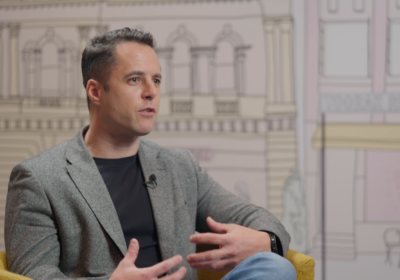You might not realize that you’re using Agile thinking in your marketing, but if you’re an effective marketer, there’s a good chance you’re leveraging at least some of the core principles in your work: quickly responding to change, data-based decision making, and cross-team collaboration.
Marketers who take a page from the Agile playbook can find new ways to keep their work focused on delivering real value to customers. Here’s how to apply Agile thinking to make your marketing more customer-driven.
Try new channels for listening.
Jay Acunzo is a content marketer who launched a podcast, Unthinkable, earlier this year. In the months since, he’s iterated not only the format of his program, but the focus and intended audience, all based on feedback from listeners. He says he’s found new ways to listen and get feedback.
“At first, I relied solely on the feedback channels you’d expect that happen to you — Twitter, email replies, etc. But lately, I’ve been much more proactive, scheduling listener calls, using weekly experiments I propose with a clear call-to-action, and even involving listeners in the actual content production process,” he says.
“Above all, I’ve switched from, ‘How can I gain more listeners for the audience?’ to, ‘How can I go deeper with the listeners I do have?’ The rest will take care of itself, from content ideas and tilt to word-of-mouth growth.”
That’s a good tip for any marketer who’s feeling stuck or constrained by the traditional feedback channels. Consider new, untried ways you can listen to your audience. Experiment until you find a winning method.
Focus on individual relationships.
One of the key principles of Agile is keeping a focus on the customer. To do that, Acunzo suggests scheduling high-quality time with them.
“Talk to them about their days, their challenges, and their lives. Don’t bring up your product or message.”
He’s scheduled this time through informal breakfast meetups, Slack groups, LinkedIn groups, and one-on-one coffee meetings.
“Bottom line: It’s not rocket science,” he says. “The more you know a person, the easier it is to share something with them that they’re sure to love.”
Forget the ‘Campaign.’
Andrea Fryrear, chief content officer of Fox Content and editor in chief of TheAgileMarketer.net, says that the traditional “one and done” mindset just doesn’t work with marketing anymore.
“It can’t be a campaign,” she said during her presentation at Content Marketing World. “It’s a commitment.”
The move away from campaign thinking is a tough pill to swallow for many marketers, especially those who have been in the field for years and are used to build plans based on traditional budget cycles and campaign-based goals. But rethinking the way we set goals, measure success, and respond to customers’ changing needs is an important part of being a modern, successful marketer.
Don’t guess — test.
One of the pillars of Agile is iteration — working in small increments to release your work, then improve upon it. Marketing is a role that’s perfect for quick experiments. Consider how you could run small experiments (A/B testing different headlines on a landing page, for example) to learn new insights about your audience that you can apply elsewhere.
It’s important to choose a marketing tech stack that makes frequent changes easy. You shouldn’t need a developer to run simple tests like this.
Keep in mind that you’re not limited to changing up copy and graphics. For example, we recently decided to experiment with a client’s email newsletter send date. The company, a consulting firm with mostly small business owner clients, had always emailed its list on weekdays because that’s what seemed logical for a B2B firm, right? They were open to experimenting, so we tried sending the newsletter on a Saturday morning.
The open rate spiked. We learned that their audience checks email on weekends, is interested in reading business advice on Saturdays, and might have a less-crowded inbox on weekend mornings.
Be ready to throw out ‘the plan.’
Plans are great, but Agile marketers keep their ears and minds open to the kind of feedback that can lead you to toss them out.
For Acunzo, a bit of unexpected feedback lead him to transform his whole keynote speaking approach.
“I’d used the same ending to my keynotes all year, until a friend sitting in the crowd of a recent talk approached me afterwards. He told me he’d overheard some others asking one big, obvious question that I’d left outstanding in my talk,” he says.
He went back to the drawing board, tweaked the ending to directly address that question, and the talk has been much better received. “But it all started with the ego-blow that was me missing something big and obvious and the tough moment of swallowing my pride, ditching an ending I liked, and reworking it for the audience,” he says.
His last point is so important. If you got into marketing as a creator — a writer or designer — you probably have your own share of artist’s ego. I know I do. But as a marketer, creating something you like doesn’t mean anything. Creating something your audience finds helpful is the real goal.
Agile thinking pushes marketers to keep their eyes open about what they could improve, their ears to the ground about what customers want and need, and their egos in check.





Join the conversation